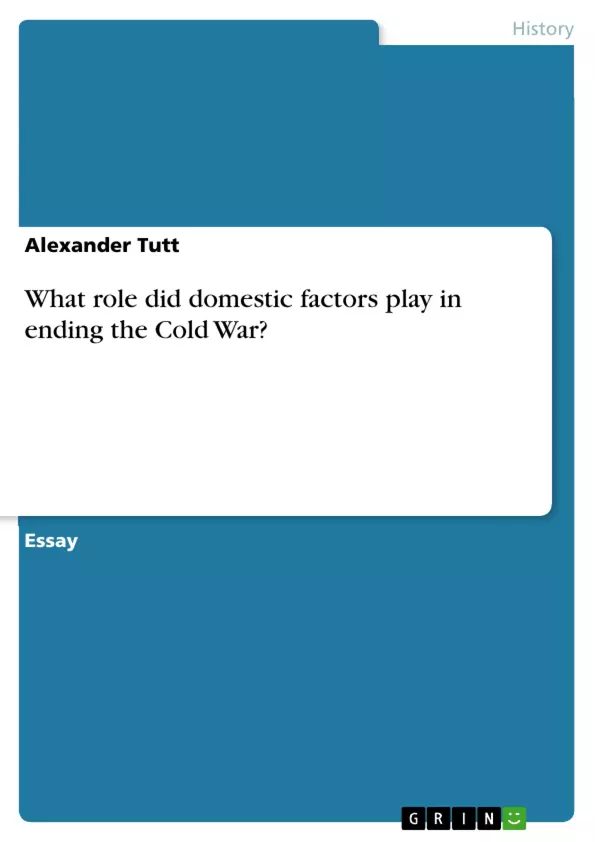Scientific literature tries to give an answer to the question of the ‘Cold War’s End’ in multiple ways. In order to relate eventual domestic factors with the peaceful ending of the East-West conflict, three questions have to be asked: What are the possible factors? Which states were involved? How can an impact of endogenous elements be validated? In order to identify eventual domestic factors, it seems expedient to have an initial look at the merit of two winners of the Nobel Prize for peace: Mikhail Gorbachev and Willy Brandt, founding fathers of glasnost and perestroika in the USSR and Ostpolitik in Western Germany, respectively. It is, however, kept in mind that the United States of America exerted indirect, as well as direct influence on domestic policy of both countries.
Given these preliminaries, the structure of this essay is fourfold. First of all, domestic factors are put into historical context considering social, political and economical factors both in Eastern and Western Germany and the Soviet Union. Afterwards, the historical facts are endowed with standpoints of several IR scholars, explaining theoretical issues and making predominant use of a social constructivist approach. Finally, a conclusion is drawn, summarizing and interpreting the results.
Inhaltsverzeichnis (Table of Contents)
- GDR and FRG - Two states, one domestic factor
- Glasnost and perestroika – Two reforms, one domestic fracture
- Two domestic factors, one theoretical approach
- Conclusion
Zielsetzung und Themenschwerpunkte (Objectives and Key Themes)
This essay explores the role of domestic factors in ending the Cold War, specifically focusing on the policies of Willy Brandt in West Germany and Mikhail Gorbachev in the Soviet Union. It aims to analyze the impact of these domestic policies on the international landscape and to understand how they contributed to the easing of East-West tensions and the eventual collapse of the Soviet Union.
- The significance of domestic policies in shaping international relations
- The influence of Willy Brandt's Ostpolitik on German reunification and East-West relations
- The impact of Gorbachev's glasnost and perestroika on the Soviet Union and the Cold War
- The interplay between domestic and international factors in shaping the Cold War's end
- The theoretical implications of domestic factors in international relations
Zusammenfassung der Kapitel (Chapter Summaries)
- GDR and FRG - Two states, one domestic factor: This chapter focuses on the division of Germany and the role of domestic politics in shaping its reunification. It highlights the efforts by both Western and Eastern allies to prevent unification, but emphasizes the significance of Willy Brandt's Ostpolitik in easing tensions and paving the way for détente.
- Glasnost and perestroika – Two reforms, one domestic fracture: This chapter examines the domestic reforms initiated by Mikhail Gorbachev in the Soviet Union. It discusses the impact of glasnost and perestroika on the Soviet system and how these reforms ultimately led to the disintegration of the Soviet Union and the end of the Cold War.
- Two domestic factors, one theoretical approach: This chapter explores the theoretical implications of the domestic factors analyzed in the preceding chapters. It contrasts realist and constructivist perspectives on the end of the Cold War, ultimately supporting the constructivist view that domestic factors played a crucial role.
Schlüsselwörter (Keywords)
The main keywords and focus topics of this essay include: Cold War, domestic factors, international relations, Ostpolitik, Willy Brandt, glasnost, perestroika, Mikhail Gorbachev, German reunification, Soviet Union, détente, social constructivism, realism, security policy.
- Citation du texte
- Alexander Tutt (Auteur), 2012, What role did domestic factors play in ending the Cold War?, Munich, GRIN Verlag, https://www.grin.com/document/275408



